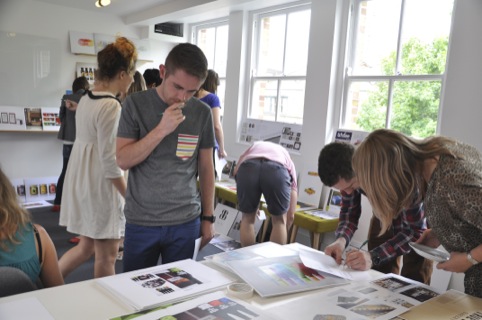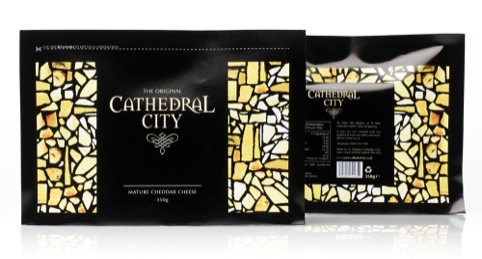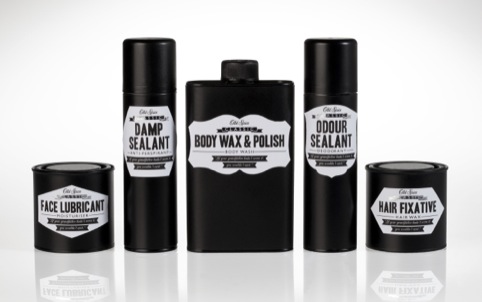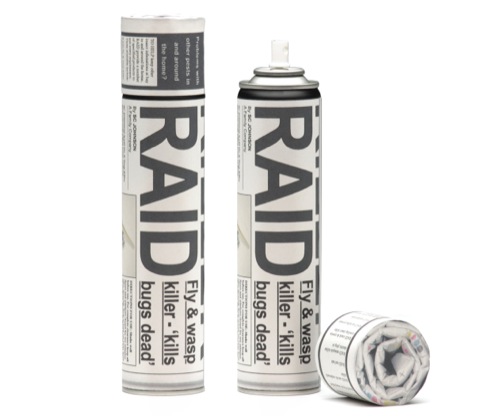Breaking into the design industry
Talking to students this year, the question ‘are there actually any jobs in design?’ came up more than once. They’ve seen friends struggle in the so-called ‘lost years’. Today the design industry seems relatively buoyant, and some agencies seem to be growing, but this year’s graduate crop will be competing with designers who have racked up contacts and placements in years when businesses weren’t recruiting.

Everyone in the industry has been there, but over time it gets harder to empathise with that difficult transition from student to junior designer. Or in my case, from student-with-a-summer-job-in-a-lamp-packing-factory to junior designer.
This summer I was involved in giving talks to graduate students for D&AD and mentoring in the D&AD Graduate Academy, as well as setting the packaging design brief and judging the D&AD Baby Pencils. As a studio we run a Design Bridge student award each year. This has given me an inside view of the current anxieties of our design graduates. With a higher intake of talented graduates, it’s worth thinking about how to stand out. Here’s advice I’ve picked up from both sides of an interview.
Student Awards
As a third-year student I exhibited at the D&AD New Blood exhibition. My lucky break came when Gert Dunbar selected my portfolio for the Best New Blood award. I also entered the Design Bridge student awards, winning a placement as a runner-up. Being picked up in this way definitely improved my chances of employment. It was the first year that Design Bridge ran a student competition, and a pattern has followed ever since: uncovering many of our new junior designers through the student awards. One of last year’s runner’s up is now a junior designer and trying out our Amsterdam studios for a month – entering awards works and it can lead to unexpected opportunities
• Start early. In second or third years students can get a foot in the door by entering awards, we run our own at Design Bridge, offering paid placements to the winners.
• Check D&AD, industry press and agency student awards.

Build Contacts
Email has become the mode of communication, but to get a job you have to stand out from the masses – and as this includes a crowded inbox, try calling. If you are starting from scratch, talk to people at lectures and shows. Tutors and former students can also help point you in the right direction.
• At shows you can make it easy for people to remember you by clearly naming your work and referencing it to your portfolio. Leave business cards for people to take away.
• Arrange meetings to review your portfolio. Discussing work in person builds a stronger impression and gives you an extra chance to follow up.
• Anonymous LinkedIn or friend requests are a no-no, but dip into social networks for research. If you find out who will be interviewing you, try introducing yourself by email to say you’re looking forward to meeting them, it helps build rapport.
Think laterally
One (successful) applicant sent a speculative CV disguised as a parking fine to the creative director. It was a believable, original approach that got everyone talking. Some of the best applications have an arresting and memorable idea. So what makes a really good idea? Something that’s irreverent, can stand on its own and has a sense of purpose.
• A bold approach gets noticed but it’s a gamble, if you don’t have a strong idea that you really believe in, keep it simple.
Interview preparation
Research really pays off. It can seem that some candidates have cast their nets really wide. There has to be a reason why a graduate has applied or wants to work at your company, so express passion and commitment.
• Think about recent work from your portfolio, the agency you are seeing and the industry in general and be prepared to explain why you are passionate about it.
• Consider questions you would like to ask: there are differences between studios big or small – how would the people working there define the company culture? How will you work with and be developed as part of a team in your first two years?

Preparing your portfolio
Don’t worry about specialising- I didn’t have a single piece of packaging design when I started at Design Bridge. It really is all about ideas but there are things you can do to clearly bring them to life:
• Approach your portfolio with the same care and attention that you put into its content. Good courses teach you how to present your portfolio, but as a general rule keep it simple, neat and ordered.
• Edit to the point where each page is a good idea, four to ten projects offer a good range.
• Have conviction about the ideas you present, don’t present projects you’re not happy with. If necessary, take one project and extend to different media
• It’s best to present one idea per page. Don’t try to cram it in so the interviewer needs to decode it. It should be really simple and easy to understand.
• You don’t need to put the brief on the page, the design should stand on it’s own and you can explain the rest.
Bad Interviews
Fact of life: everyone will have bad interviews. One of our senior designers Christian Bird had an interview where a guy skateboarded in, didn’t say a word, flicked through his portfolio and skateboarded out. Never heard from him again… Christian was nominated for a D&AD award this year, enough said.
• A bad interview is not really a bad interview – at least you’ll know where you don’t want to work.
• If you like a company but the first interview hasn’t gone as well, ask for constructive feedback to improve so you can develop and come back.
Good Interviews
The way you present your work reflects how you will talk to clients. There are things you can do to structure it and leave a good impression.
• Explain the brief and how you interpreted it – add anecdotes that bring your approach to life.
• Keep it conversational and turn the page, you don’t have to labour the point.
• For impact and memorability, present your best work at the beginning and end of your portfolio.
• Ask for feedback at the end. Someone might have ideas about how you can extend projects.
• Save rationale for the end and present it in a separate folder or use it as a tool to follow up.

Perfect Placements
One of our newest recruits, Felicity, started her career here on a placement. She made herself an important member of the team immediately – producing work that was not only being presented to the client but also became the favourite route. When someone steps up to the role with ease and enthusiasm it leaves you no choice but to offer them a job!
• Speak up and share your ideas
• Take time and care to complete any task in the best way you can.
• Ask advice about how you can improve to show you want to develop.
• Keep in touch following placements, asking advice about a project is a good way to stay top of mind.
Having gone through it ten years ago, I feel very lucky to have landed a job where I did. But it’s only partly luck – if you are determined enough, you’ll get the job you’re looking for. When you do start that elusive first job as a junior designer the hard work begins all over again. But the designers that I know think it’s worth it. It definitely beats packing lamps.
Asa Cook is creative director at Design Bridge.
-
Post a comment




